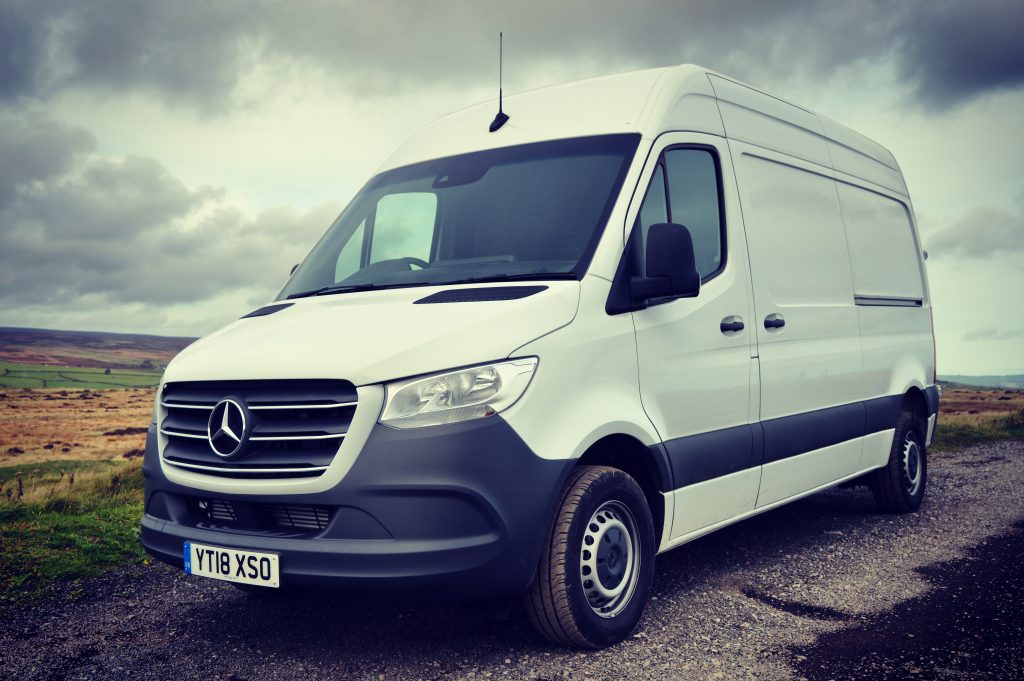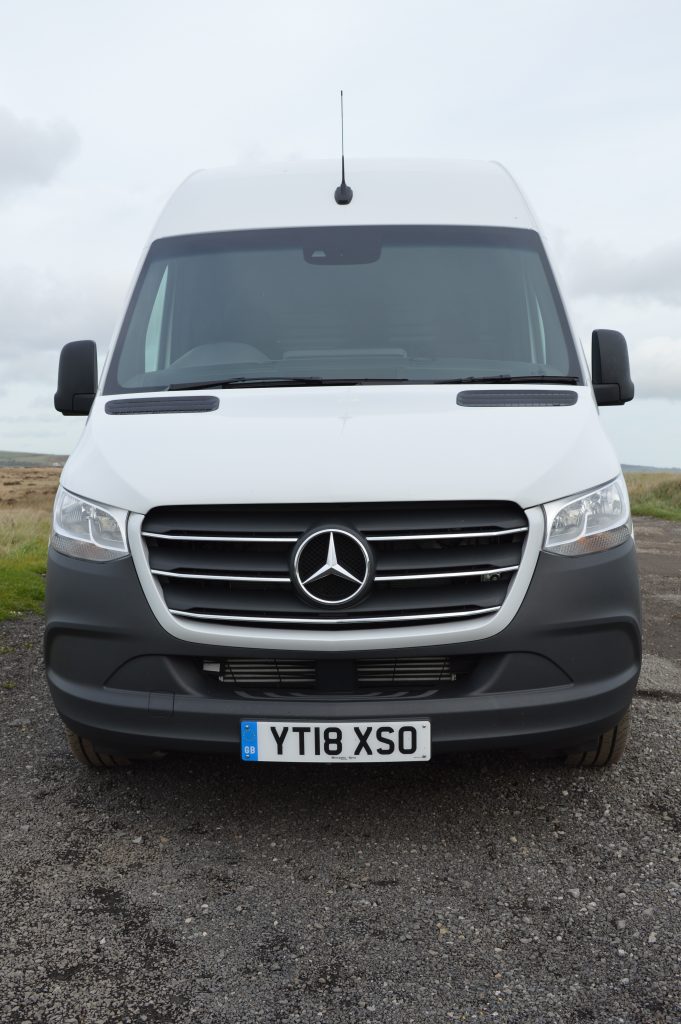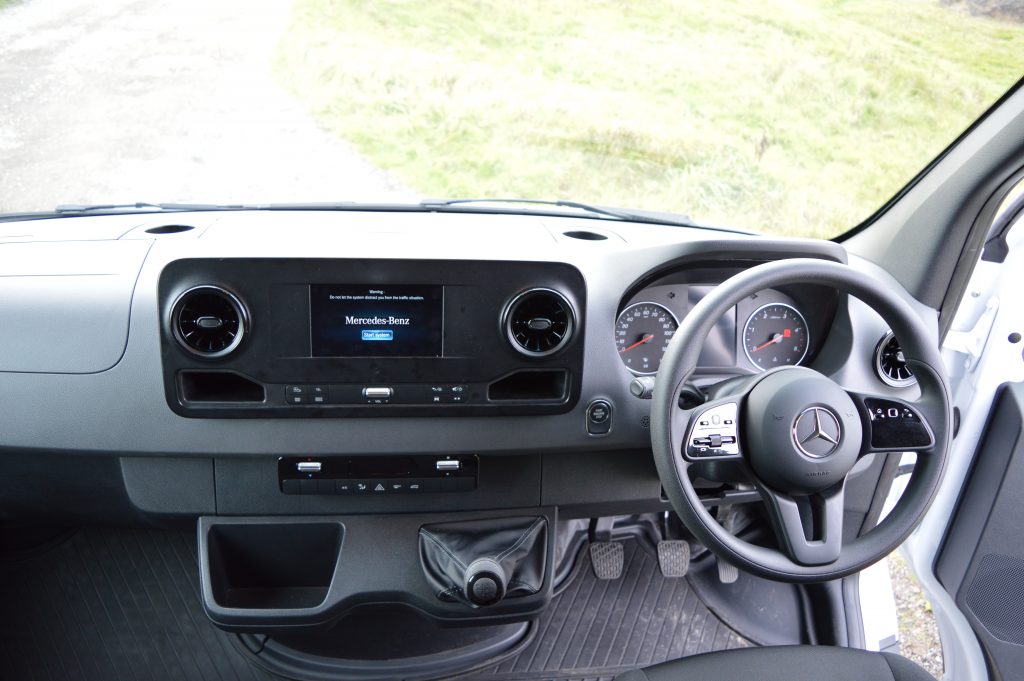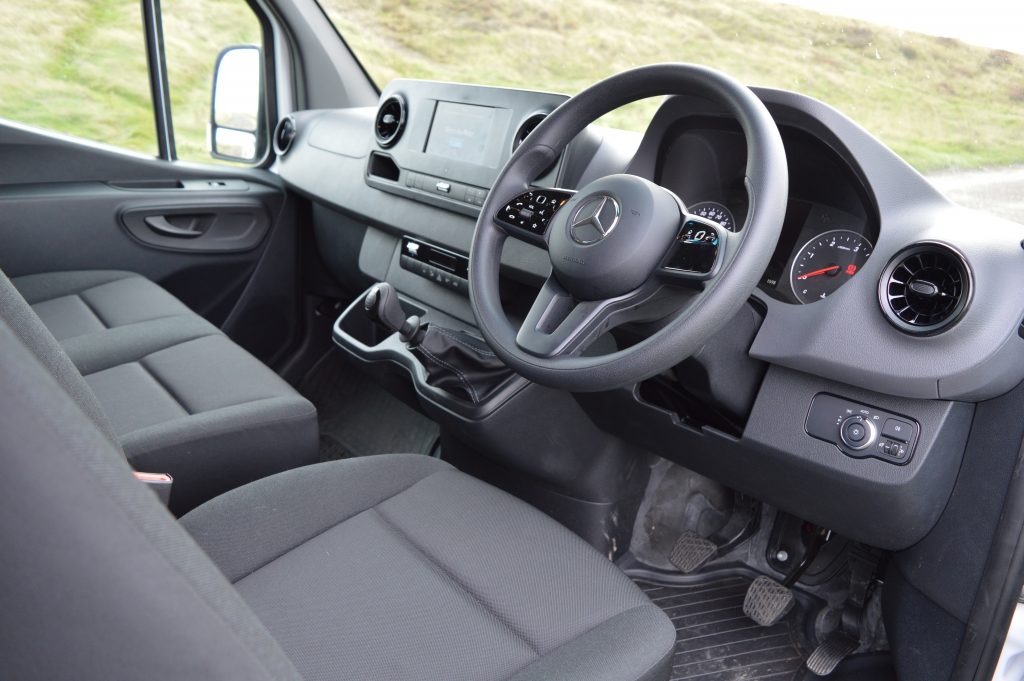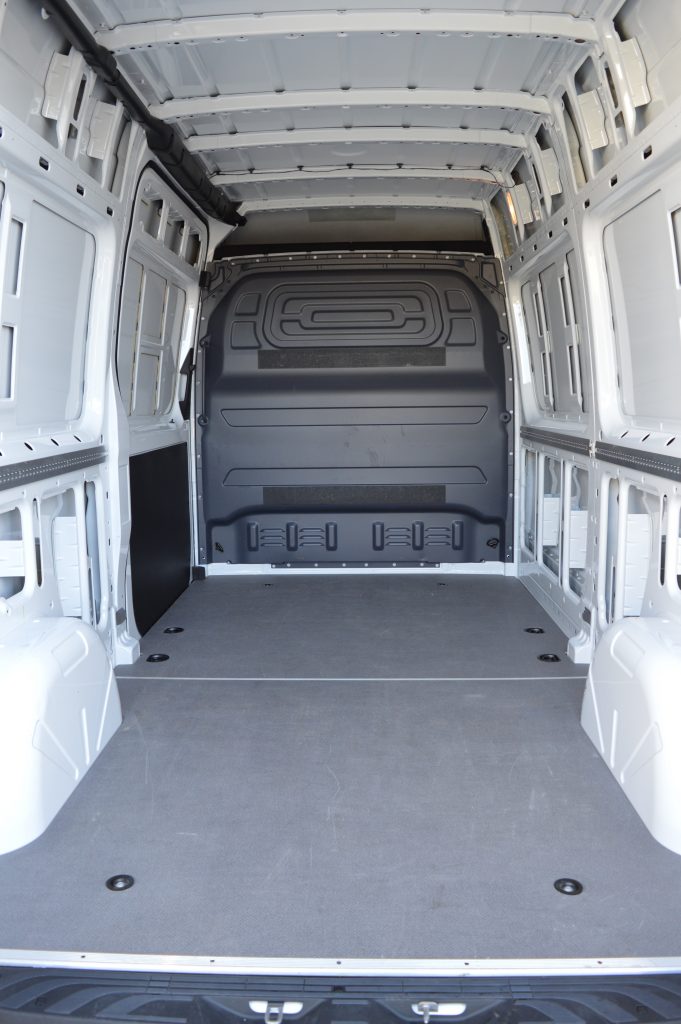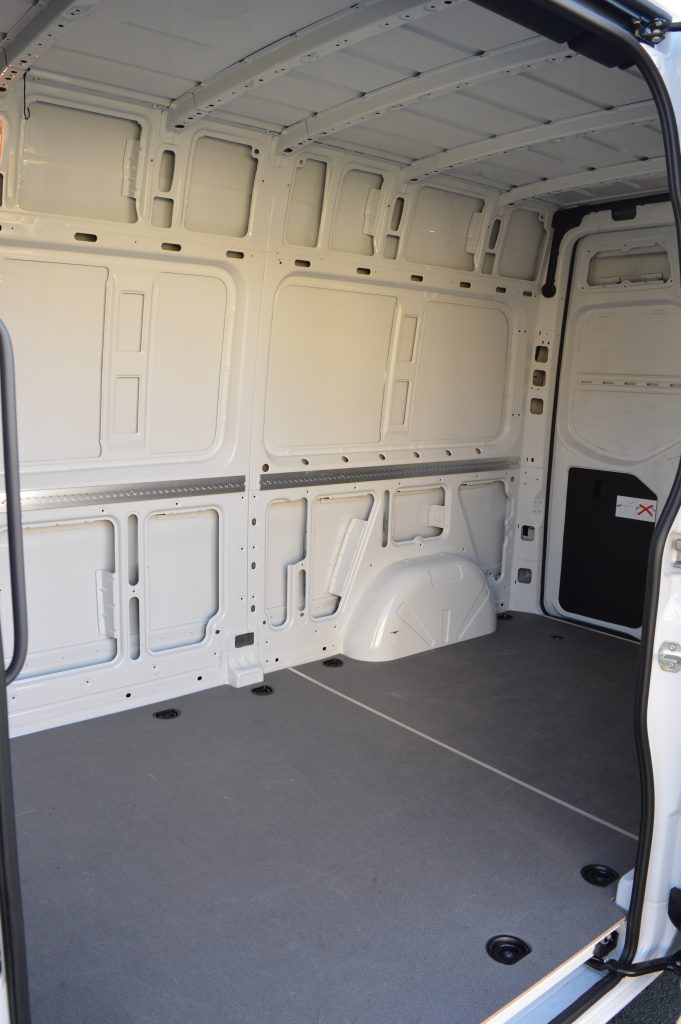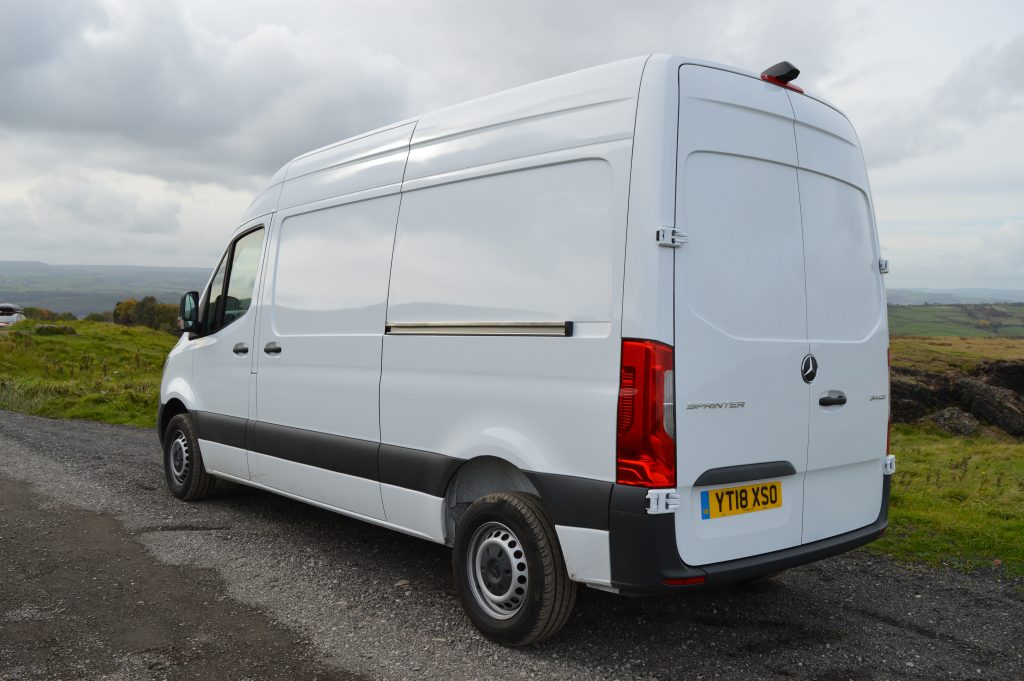Road Test and Review – Mercedes-Benz Sprinter (2018MY)
Technology comes to the white van man…
Background
Compared to other categories of light commercial vehicle, the 3.5 tonne GVW sector is probably the least sexy and most utilitarian. These are serious load luggers, be it on parcel deliveries, as a mobile service vehicle, or a double cab tipper working on construction projects. Workhorses, designed to do a job and one can forgive manufacturers for concentrating on designing and manufacturing a vehicle capable of being worked hard rather than looking sporty with nice lines, alloy wheels and perhaps an optional body kit. Often described as ‘a box on wheels’, it’s regarded as something functional and more of a business tool.
This sector is dominated in the UK by the Mercedes-Benz Sprinter, Volkswagen Crafter and the Ford Transit. Crafter was relaunched as an entirely new van in 2017 but Ford have been slow in freshening up the Transit, a facelifted version finally being unveiled at the IAA show at Hanover in September 2018.
Sprinter has had a number of facelifts over the years, some more notable than others. Unveiled in February 2018, the latest incarnation which is vaunted by the manufacturer as being all new may not at first glance look too dissimilar to its predecessor but, promising not only improvements in cab comfort the manufacturer unveiled radical new connectivity features designed to aid efficiency. In addition, for the first time the Sprinter can be supplied with front wheel drive.
Specification and features
Although available in 1700 combinations of body type, length, height, weight, engine etc, the test van, a 314 L2H2 panel van with the mid range 143HP Diesel engine and manual transmission will undoubtedly be a core vehicle in the range. Unlike Ford, Mercedes-Benz do not offer multiple levels of trim, electing to supply a reasonably specified vehicle as standard but with a lengthy catalogue of optional extras to allow a customer to tailor the vehicle to their precise requirements. Indeed, the test van had a long list of additions at a cost of £3625. As standard however come DAB radio, Cruise Control, multimedia system with 7-inch touch screen and safety features such as Active Brake Assist, Adaptive brake light, Attention assist, Crosswind Assist, Headlight Assistant and Hill-Start Assist.
Connectivity
Mercedes-Benz claim the new Sprinter to be the first production van to have its own fully integrated telematics system offering a plethora of features allowing the operation of the vehicle to be monitored remotely. With its own dedicated SIM card, as standard the system offers MB Emergency Call System (eCall), Maintenance Management, Accident and Breakdown Management, Fleet Communication, Internet in the van (hotspot) and Digital Trip Management. Also included free of additional charge for three years are a range of extended services; Vehicle Supervision, Vehicle Operations, Theft Warning, Eco Monitor and Safety Monitor.
The cab environment
A van in this sector is almost bound to have a spacious cab area and the Sprinter is no exception. The seats, both for the driver and passengers are comfortable and anything but cramped. The smart and clear dash is dominated by the centrally mounted multimedia unit (although this is not angled towards the driver) but visibility through the windscreen is excellent and is unobscured at the bottom by the dash. Despite the size of the cab, internal storage isn’t the best, with no large door bins or bottle holders to keep the drivers bits and bobs out of harms way. The test van did however have optional lidded trays to the left and right of the standard central unit on the top of the dash, handy for securing smaller objects and storing paperwork. Again, a modest storage facility above the windscreen is optional.
Load area
Straight sides and bulkhead, minimal wheelarch intrusion and some tie down points allowing for efficient and safe load storage are the basics needed in a van and the Sprinter doesn’t disappoint. Additionally, with a wide side loading door and rear doors which partially fold back against the sides of the vehicle, loading and unloading is made as easy and practical as possible. Despite the test van being front wheel drive, the rear loading height isn’t particularly low and a step would be a nice addition.
One personal gripe which most manufacturers are guilty of is a lack of LED lighting in the loadspace. This type of lighting technology is cheap these days and there is little excuse for not making it standard equipment. It makes all the difference to a driver accessing the load area in poor daylight.
On the road
The driving position is excellent, and for those who habitually rest their right arm on the top of the door the Sprinter will appeal. The media unit is clear in all light conditions and a great addition to the (optional) navigation system is the ‘what3words’ system, allowing the driver to navigate to a uniquely identified 9 square metre location by a simple three word address. As you would expect, the majority of driver controls are accessible either via the multi-function steering wheel, or by conventional stalks.
The van was tested unladen but, performance was more than adequate and it is expected that with a load on it would be acceptable. The front wheel drive configuration could only be provoked into mild understeer when pushed and felt safe and competent. Overall, the driving experience felt refined and composed, although on one motorway journey, a combination of a headwind and a road surface which wasn’t perhaps the best gave a surprising level of noise into the cab. It has to be said though with the smoothness of modern Euro 6 engines, this noise would not have been noticeable in a van manufactured just a few years ago, it being drowned out by engine noise.
The trip computer mysteriously reset itself a couple of times whilst on test, but an indicated fuel consumption of around 31mpg during our week with the van is estimated.
Conclusion
It’s hard to see what else Mercedes-Benz could have done to make this facelifted van any better. The connectivity is a game changer and will no doubt be replicated in due course by the competition (indeed, the facelift Transit is coming with some new technology). It’s comfortable and refined, it’s a capable workhorse, it’s packed with safety features and the range of vehicle permutations and options mean that all operators can configure the vehicle to their exact requirements, although sometimes, particularly with options, at a price. It is an outstanding van which will take some beating.
